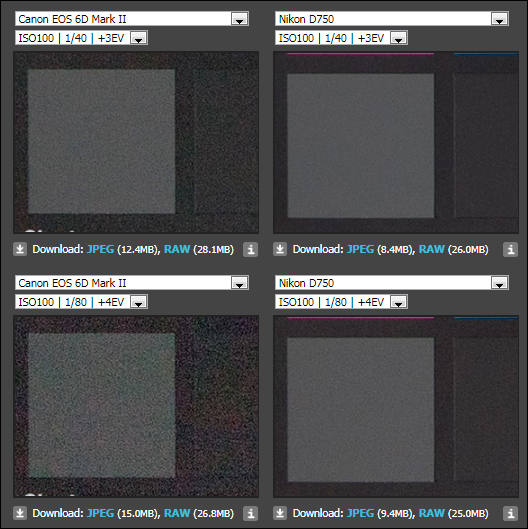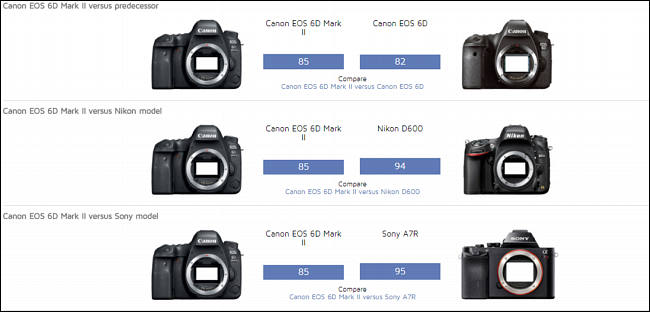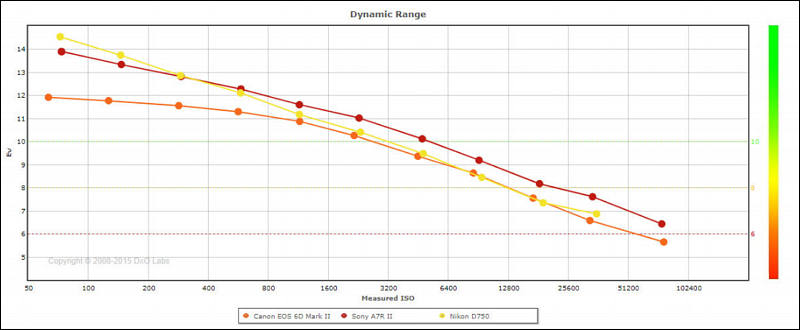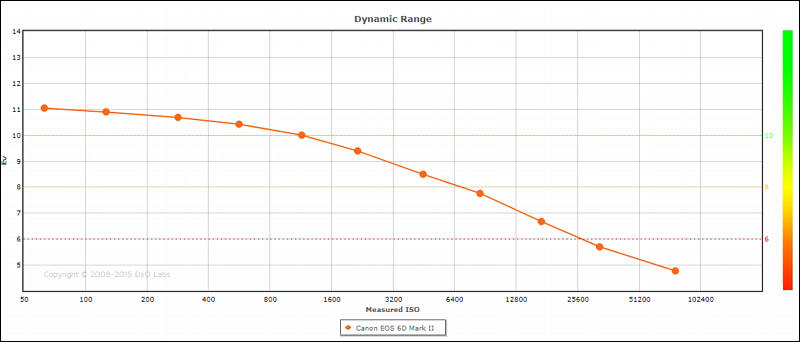
It allows to keep PV going, with more focus towards AI, but keeping be one of the few truly independent places.
-
Imaging Resource ISO test: http://www.imaging-resource.com/PRODS/canon-6d-mark-ii/canon-6d-mark-iiA7.HTM
-
More videos about features
-
Canon sensor is still not so good as Sony made sensors

https://www.dpreview.com/articles/3416153698/canon-eos-6d-mark-ii-dynamic-range

 sample957.jpg528 x 529 - 52K
sample957.jpg528 x 529 - 52K -
In stock
- https://www.amazon.com/Canon-Mark-Digital-Camera-Body/dp/B072MZCJKN/
- with 24-105mm IS STM lens https://www.amazon.com/Canon-Mark-Digital-Camera-Body/dp/B071K62DPM/
- with 24-105mm USM lens https://www.amazon.com/Canon-Mark-Digital-Camera-Body/dp/B071K62DZT/
-

https://www.dpreview.com/reviews/canon-eos-6d-mark-ii-review
Conclusion As it should be, the EOS 6D II is a better camera than its predecessor in almost every way. With plenty of resolution, respectable burst shooting speeds and pleasing Canon color, it's a camera that's capable of producing great images in a variety of situations. Despite this, it is simply overshadowed by competition that is made up of more capable cameras at similar or lower prices.
[VK: added samples]

 s173.jpg800 x 529 - 70K
s173.jpg800 x 529 - 70K -
Review
The 6D II records video in .MP4 or .MOV format using the MPEG-4 AVC / H.264 codec, with audio being recorded in Linear PCM (.MOV) or AAC (.MP4) via dual front microphones (producing stereo sound) or the 3.5mm stereo input jack. Sound recording levels can be set to Auto, Manual (64 levels) or Disabled entirely. Unfortunately, Canon decided not to include a headphone terminal in its budget full frame offering. Wind Filter and Attenuator options can be set in the sound recording menu.
One particularly annoying quirk regarding movie recording with the 6D II is that when the camera is set to Shutter Priority (Tv) or Aperture Priority (Av) mode, the camera will vary both the shutter and aperture to maintain exposure, the same as if the camera were set to Program (P) mode. For the ultimate control, use Manual (M) mode with Auto ISO (as needed).
http://www.the-digital-picture.com/Reviews/Canon-EOS-6D-Mark-II.aspx
-
Review

The camera records FullHD video at frame rates up to 60fps, with stereo microphones built-in. The ISO speed available goes up to ISO25600 in Auto mode. Manual ISO settings can be expanded to H1: ISO51200, and H2: ISO102400. A full range of frame rates are available, including 59.94, 50, 29.97, 25, and 23.976fps. Videos are recorded as MP4 (MPEG-4 AVC, H264) files, with options of IPB Standard or Light, this results in a bitrate of 58-59mbps.
You can adjust the audio levels manually, or leave them on auto. There are wind filter and attenuator options. HDR movie recording is possible as one of the scene modes. In-camera 5-axis Digital IS available (options are: Off, Enable, and Enhanced). As the electronic image stabilization reduces video quality, we'd recommend the use of a lens with optical image stabilization, or the use of a tripod (or monopod).
https://www.ephotozine.com/article/canon-eos-6d-mark-ii-expert-review-31095/

 s244.jpg796 x 532 - 49K
s244.jpg796 x 532 - 49K -
All options are in stock now:
- Body - https://www.amazon.com/Canon-Mark-Digital-Camera-Body/dp/B072MZCJKN/
- Kit with 24-105 f3.5-5.6 - https://www.amazon.com/Canon-Mark-Digital-Camera-Body/dp/B071K62DPM/
- Kit with w/24-105 f4L - https://www.amazon.com/Canon-Mark-Digital-Camera-Body/dp/B071K62DZT/
-
New firmware is coming within month. Some video improvements must be included.
-

 s320.jpg800 x 770 - 89K
s320.jpg800 x 770 - 89K -

 s390.jpg800 x 541 - 53K
s390.jpg800 x 541 - 53K -

 s520.jpg800 x 526 - 92K
s520.jpg800 x 526 - 92K -
Video user guide
-
Review

Positive points of the Canon EOS 6D Mark II include improved AF system, the fantastic articulating touch-screen and a new LSI which facilitates a better high noise performance. Sadly downsides are present too. Having a single SD card slot is disappointing at this price point, while 4K video is starting to become so standard that to see it left out of a £2,000 camera is definitely a let-down
http://www.photographyblog.com/reviews/canon_eos_6d_mark_ii_review/

 s624.jpg800 x 528 - 52K
s624.jpg800 x 528 - 52K -
DXO Sensor performance

With dynamic range it is weird

But on separate measurement it is

https://www.dxomark.com/canon-eos-6d-mark-ii-sensor-review-great-color-iso-performance/

 s983.jpg650 x 312 - 32K
s983.jpg650 x 312 - 32K
 s984.jpg650 x 277 - 31K
s984.jpg650 x 277 - 31K
 s985.jpg800 x 342 - 36K
s985.jpg800 x 342 - 36K
 s986.jpg800 x 330 - 41K
s986.jpg800 x 330 - 41K -

 s1150.jpg800 x 528 - 116K
s1150.jpg800 x 528 - 116K -
Review

EOS 6D II camera supports two video recording formats: MP4 and MOV, although the latter is only used for time-lapse recordings. For MP4 recordings, the MPEG4 AVC with H264 inter-frame compression applies.
Video resolution is still limited to 1920 x 1080 pixels and the maximum frame rate is 60p/50p (NTSC/PAL). When shooting movies, users can take advantage of the Dual Pixel CMOS AF, which supports phase-detection autofocus across a wide area of the frame for faster and more accurate focusing to yield smoother movie recording.
Enabling Digital IS adds 5-axis image stabilization but crops the frame to minimize camera shake. It's useful for handheld shooting while walking and when shooting from a moving vehicle. This function can interact with the optical IS function in Canon lenses to provide a higher level of stabilization.
http://photoreview.com.au/reviews/dslr-cameras/advanced/canon-eos-6d-mark-ii

 s1284.jpg598 x 398 - 60K
s1284.jpg598 x 398 - 60K -
Canon EOS 6D Mark II DSLR Camera, $1715
Howdy, Stranger!
It looks like you're new here. If you want to get involved, click one of these buttons!
Categories
- Topics List24,098
- Blog5,725
- General and News1,403
- Hacks and Patches1,153
- ↳ Top Settings33
- ↳ Beginners256
- ↳ Archives402
- ↳ Hacks News and Development56
- Cameras2,401
- ↳ Panasonic995
- ↳ Canon118
- ↳ Sony156
- ↳ Nikon96
- ↳ Pentax and Samsung70
- ↳ Olympus and Fujifilm102
- ↳ Compacts and Camcorders300
- ↳ Smartphones for video97
- ↳ Pro Video Cameras191
- ↳ BlackMagic and other raw cameras149
- Skill1,960
- ↳ Business and distribution66
- ↳ Preparation, scripts and legal38
- ↳ Art149
- ↳ Import, Convert, Exporting291
- ↳ Editors191
- ↳ Effects and stunts115
- ↳ Color grading197
- ↳ Sound and Music280
- ↳ Lighting96
- ↳ Software and storage tips266
- Gear5,420
- ↳ Filters, Adapters, Matte boxes344
- ↳ Lenses1,582
- ↳ Follow focus and gears93
- ↳ Sound499
- ↳ Lighting gear314
- ↳ Camera movement230
- ↳ Gimbals and copters302
- ↳ Rigs and related stuff273
- ↳ Power solutions83
- ↳ Monitors and viewfinders340
- ↳ Tripods and fluid heads139
- ↳ Storage286
- ↳ Computers and studio gear560
- ↳ VR and 3D248
- Showcase1,859
- Marketplace2,834
- Offtopic1,343










